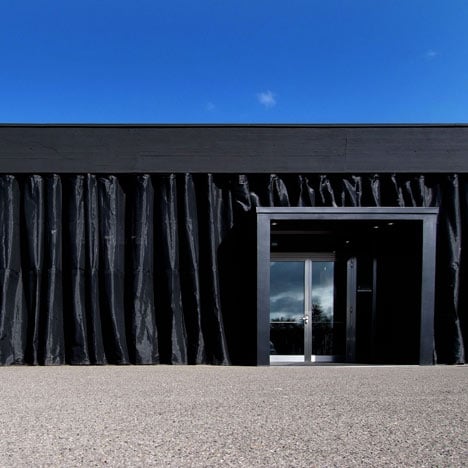
Artwood Showroom by LDA.iMdA Architects
Italian studio LDA.iMdA Architects converted this former warehouse in northern Italy into a design showroom and then concealed it behind gauzy black curtains.
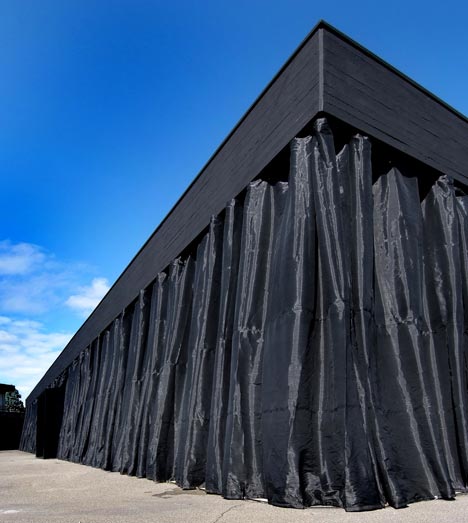
Located in the town of San Miniato, the single-storey building for timber furniture brand Artwood now houses exhibition areas, offices and a reception.
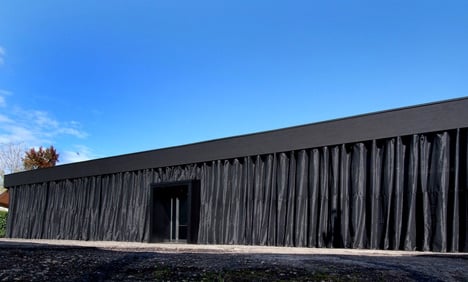
Only the black-framed entrance punctures the dark curtain exterior, as there are no windows.
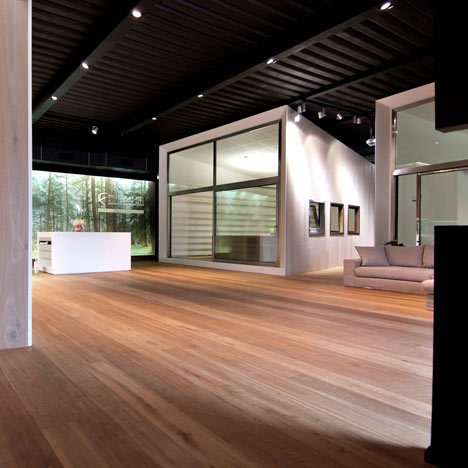
Inside, chunky timber light-boxes bear down over exhibition stands, while an assortment of different wood finishes covers the walls and floor.
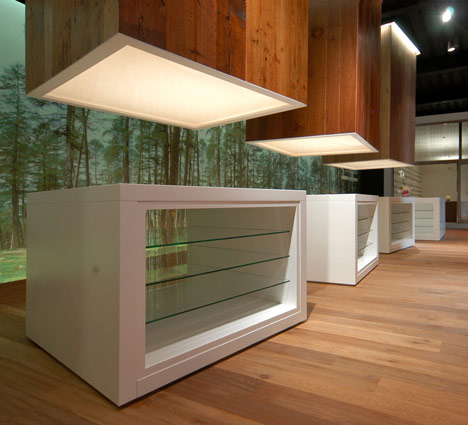
Another showroom we've featured in recent months was completed by Zaha Hadid for a bathroom brand - see it here.
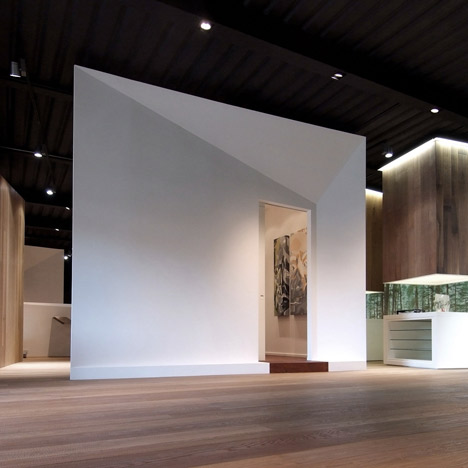
Here's some more text from the architects:
ARTWOOD showroom (LDA.iMdA architects)
An abandoned warehouse and the need of bringing inside a new contemporary world are the reasons for a new reinterpretaion of the unused space.
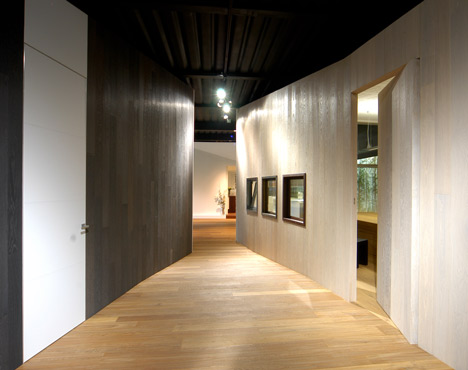
“Second life” is a philosofical (but not only) reinterpretation that allows the use and the improvement of the neglected buildings inventing their new life, therefore giving them a second chance.
This concept is the starting point for the Artwood exhibition space (wood artistic life), where the product is the protagonist, to be mainly “lived”, rather than sold.

The space is designed as a camping in the wood, which is providing the woodworks meant as e return to the origins claimed by the logo, done in the same circumstance, showing the house shaped by the nature.
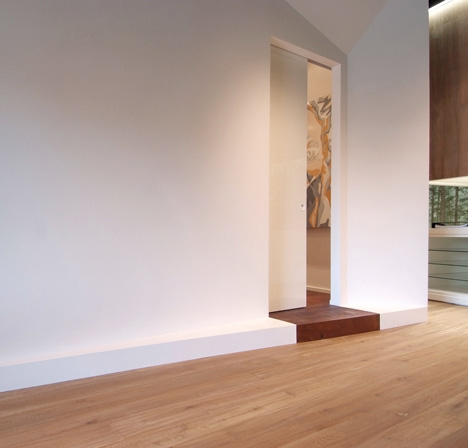
The wish to cancel the presence of the generator box, keeping the existing structure, leads to the use of the black as a non-colour for the ceilings and the walls, dematerializing the borders, merging into the dark air of a summer night. The curtain black veil solves in a technological way the architecture functionality as well, by the principle of the maximum performance with the minimum of energy spent, and it is designed as an edge the allows to enjoy a different internal place.
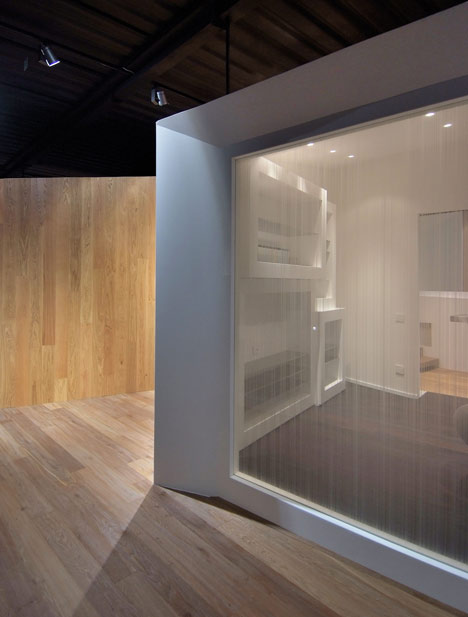
Crossing the only entrance through the voluptuous curtain, you can reach a sensorial parallel world. The space is defined by deformed volumes voluntarily spread around under a starry sky (the starry black sky), whose location allows the user to move within a wide open space.
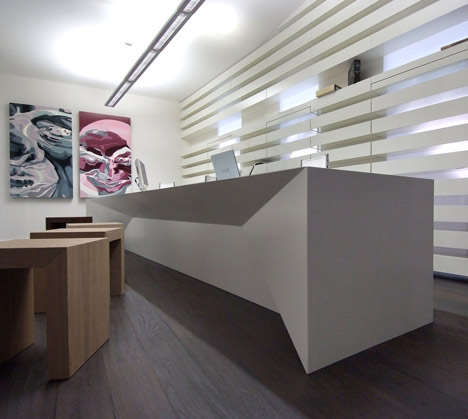
Along the back wall you can see the backlighted picture of a vivid wood, to feel the natural authencity you can breath in the products.
Artwood is designed as an open space where you can follow the stories of the furnitures, where the container is contained and the structure becomes an exhibitor, inverting the common idea of space/ exhibition, so far.
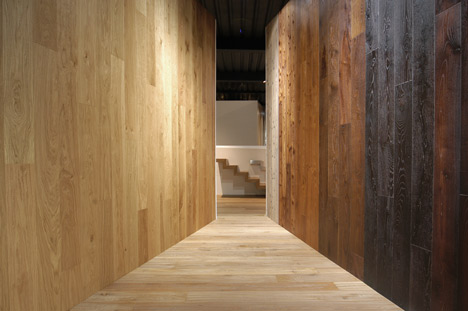
The wish of making spaces with variable relatiosnhips, creates a different use/ relationship between visitor and exhibition space; you can stop in resting spaces and followunusual and unexpected paths, as well.
Inside every volume, showrooms, offices, reception desk and services are located.
Walking, stopping and living inside this building help to loose the feeling of being in a commercial space, and make the visit as a real experience.